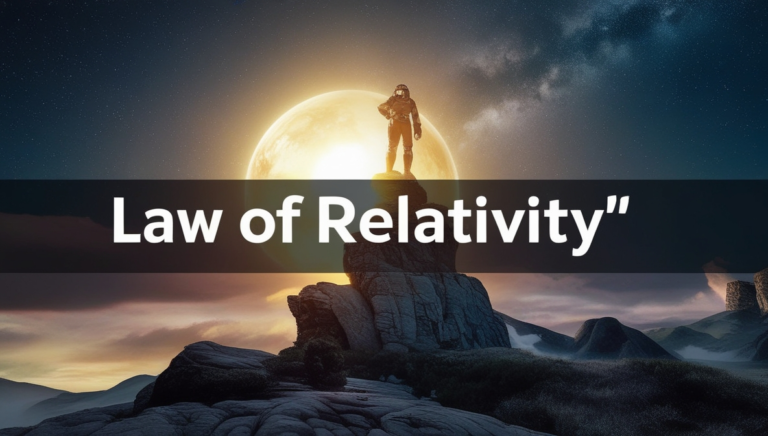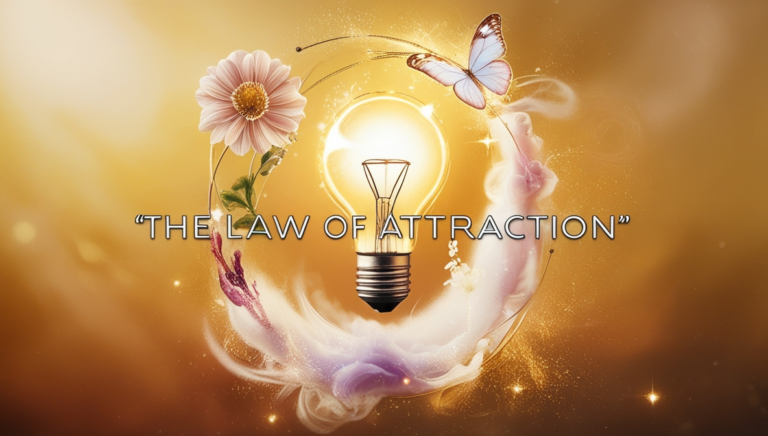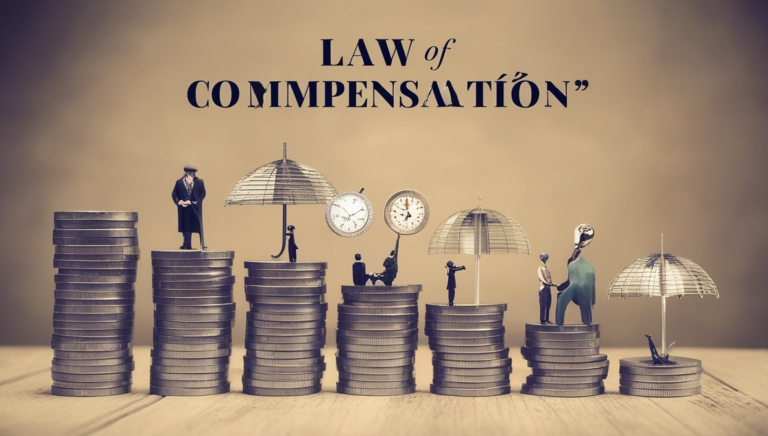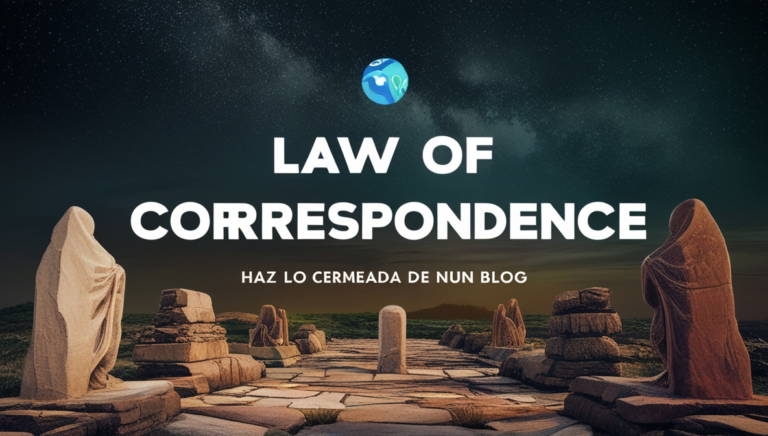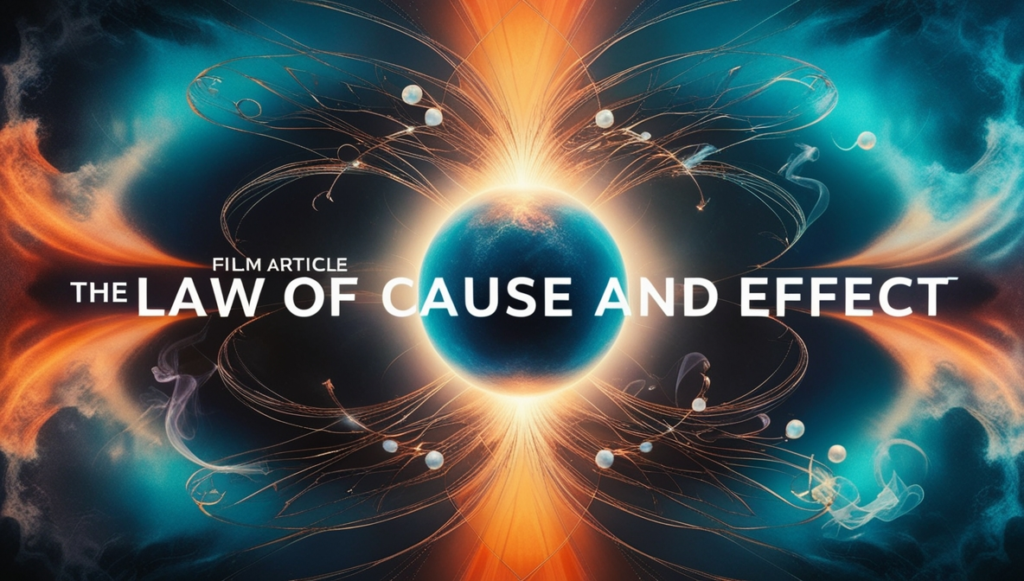
The Law of Cause and Effect is a fundamental universal law that governs every action, thought, and event in the universe. It operates on the premise that for every action, there is a corresponding reaction. This law is closely related to the Law of Karma and is sometimes considered a more scientific or logical explanation of how karma works. Essentially, it reminds us that nothing happens by chance—every result in your life is the effect of something you or someone else has caused, whether consciously or unconsciously.
This law underscores the importance of our actions, both big and small, as they ripple through time and space, creating consequences that eventually come back to us. Understanding and applying the Law of Cause and Effect can empower you to take control of your life, as it encourages you to be more mindful of your thoughts, actions, and decisions. Discover more about Spiritual Laws.
What Is the Law of Cause and Effect?
The Law of Cause and Effect can be summed up in the following principle: “Every cause has its effect, and every effect has its cause.” This means that everything that happens in your life—whether good or bad—is the result of a previous cause. In simpler terms, whatever you sow, you will eventually reap.
This law doesn’t distinguish between positive or negative actions—it applies equally to both. Positive actions lead to positive effects, while negative actions lead to negative consequences. The law is neutral and works automatically, without judgment or favoritism.
For example:
- If you consistently put effort into learning a new skill, the effect will be improvement and success.
- If you spread kindness and help others, the effect will be strong relationships and personal fulfillment.
- Conversely, if you engage in harmful behaviors or negative thinking, the effect could be challenges, setbacks, or difficulties in your life.
This cause-and-effect relationship is not limited to the physical world; it also applies to your thoughts and emotions. Your mindset and inner world can influence the outcomes in your external reality.
How Does the Law of Cause and Effect Work?
To fully grasp the Law of Cause and Effect, it’s essential to understand how it operates on different levels—physically, mentally, and spiritually.
1. Physical Cause and Effect
The most straightforward way to observe this law is in the physical world. Every action you take produces a reaction. For instance:
- If you push a ball, it will roll.
- If you plant seeds, they will grow.
- If you neglect your health, you may face illness.
These examples show that in the physical realm, the Law of Cause and Effect is quite easy to observe. The actions you take today have tangible results, whether immediate or delayed.
2. Mental and Emotional Cause and Effect
While physical effects are more obvious, mental and emotional causes are just as powerful. Your thoughts and feelings act as causes, influencing not only your emotional state but also the events and circumstances in your life. For example:
- Positive thinking and an optimistic mindset can lead to opportunities, success, and happiness.
- Negative thinking, fear, or self-doubt can attract failure, obstacles, and frustration.
Your emotions also play a role in this law. If you hold onto anger or resentment, the effect might be strained relationships or a lack of inner peace. On the other hand, cultivating emotions like gratitude or compassion can lead to joy, fulfillment, and stronger connections with others.
3. Spiritual Cause and Effect
On a spiritual level, the Law of Cause and Effect is deeply intertwined with your soul’s growth and purpose. The actions you take in this lifetime are believed to influence not only your current experiences but also your future incarnations, depending on your spiritual beliefs. Spiritual growth often involves becoming aware of the causes you’re setting in motion and choosing to align your actions with higher intentions.
Spiritual teachers often emphasize that understanding this law is key to achieving enlightenment or a deeper connection with the universe. By consciously creating positive causes, you can elevate your vibration and attract more harmonious and fulfilling experiences into your life.
How to Apply the Law of Cause and Effect in Your Life
Now that you understand the basics of the Law of Cause and Effect, the next step is learning how to apply it in your daily life to create positive outcomes. Here are some practical tips for harnessing the power of this universal law:
1. Be Mindful of Your Actions
Every action you take has a consequence, so it’s essential to be mindful of your behavior and decisions. Before you act, consider the potential effects your actions might have on others and yourself. This mindfulness can help you make better choices that lead to positive outcomes.
2. Cultivate Positive Thoughts
Remember that your thoughts are causes, and they have the power to create effects in your reality. By cultivating a positive mindset, you can attract more favorable circumstances into your life. Practice affirmations, visualization, and gratitude to shift your thought patterns toward positivity.
3. Take Responsibility
This law teaches that you are responsible for your life. Instead of blaming external circumstances or other people for your problems, take ownership of the causes you’ve created. This mindset shift will empower you to make better choices moving forward and create the reality you desire.
4. Create Positive Causes
By consciously creating positive causes, you can ensure that the effects you experience in the future will be beneficial. Acts of kindness, generosity, and love will return to you in the form of positive experiences. Whether it’s helping a stranger, supporting a friend, or simply being kind to yourself, every positive action contributes to a more fulfilling life.
5. Embrace Patience
The effects of your actions might not manifest immediately. The Law of Cause and Effect operates over time, and sometimes the results of your actions take months or even years to come to fruition. Be patient and trust that the positive causes you’ve set in motion will eventually bring good into your life.
Real-Life Examples of the Law
To further illustrate how the Law of Cause and Effect works, let’s look at some real-life examples:
1. Career Success
Imagine someone who consistently works hard, develops their skills, and builds strong relationships in their career. Over time, the cause (hard work and dedication) leads to the effect of promotions, success, and financial stability. Conversely, if someone neglects their responsibilities or engages in unethical behavior, the effect might be job loss or damaged reputation.
2. Relationships
If you regularly invest time, energy, and love into your relationships, the effect will likely be stronger, more fulfilling connections with others. However, if you neglect relationships or engage in selfish behavior, the effect might be conflict, distance, or even the breakdown of those connections.
3. Personal Well-Being
Taking care of your physical and mental health—through proper nutrition, exercise, and self-care—creates positive causes that lead to the effect of well-being and vitality. On the other hand, neglecting your health by engaging in harmful habits can result in illness, fatigue, or emotional distress.
Common Misunderstandings About the Law of Cause and Effect
Despite being straightforward, the Law of Cause and Effect is often misunderstood. Let’s clear up a few common misconceptions:
1. The Effects Are Always Immediate
Some people believe that the effects of their actions should be immediate, but that’s not always the case. The law operates on its own timeline, and the effects of your actions might take time to manifest. Patience is key.
2. It’s All About Physical Actions
While physical actions are important, it applies to thoughts, emotions, and intentions as well. The energy behind your actions matters just as much as the actions themselves. Positive actions with negative intentions may still create negative effects.
3. There Are No External Influences
While the Law of Cause and Effect emphasizes personal responsibility, it’s also important to recognize that external factors can influence your life. Other people’s actions, societal structures, and environmental factors all play a role in shaping outcomes. However, the law still encourages you to focus on what you can control—your own causes.
The Spiritual Significance of the Law of Cause and Effect
On a deeper level, the Law of Cause and Effect invites us to take full responsibility for our spiritual journey. Every decision, whether positive or negative, contributes to our soul’s growth. By understanding this law, we become more conscious of our spiritual path and the energy we are putting into the world.
In many spiritual traditions, mastering this law is considered a key part of achieving enlightenment. When you understand that every cause has an effect, you begin to align your actions with higher principles such as love, compassion, and truth. This alignment not only benefits your personal life but also contributes to the collective spiritual evolution of humanity.
Conclusion: Embrace the Power of Cause and Effect
The Law of Cause and Effect is a powerful universal law that reminds us of the importance of our actions, thoughts, and intentions. By becoming aware of the causes you set in motion, you can consciously create positive effects in your life. Whether it’s through mindfulness, compassion, or personal responsibility, the choices you make today shape your future.
By applying this law in your daily life, you can cultivate more success, fulfillment, and spiritual growth.


